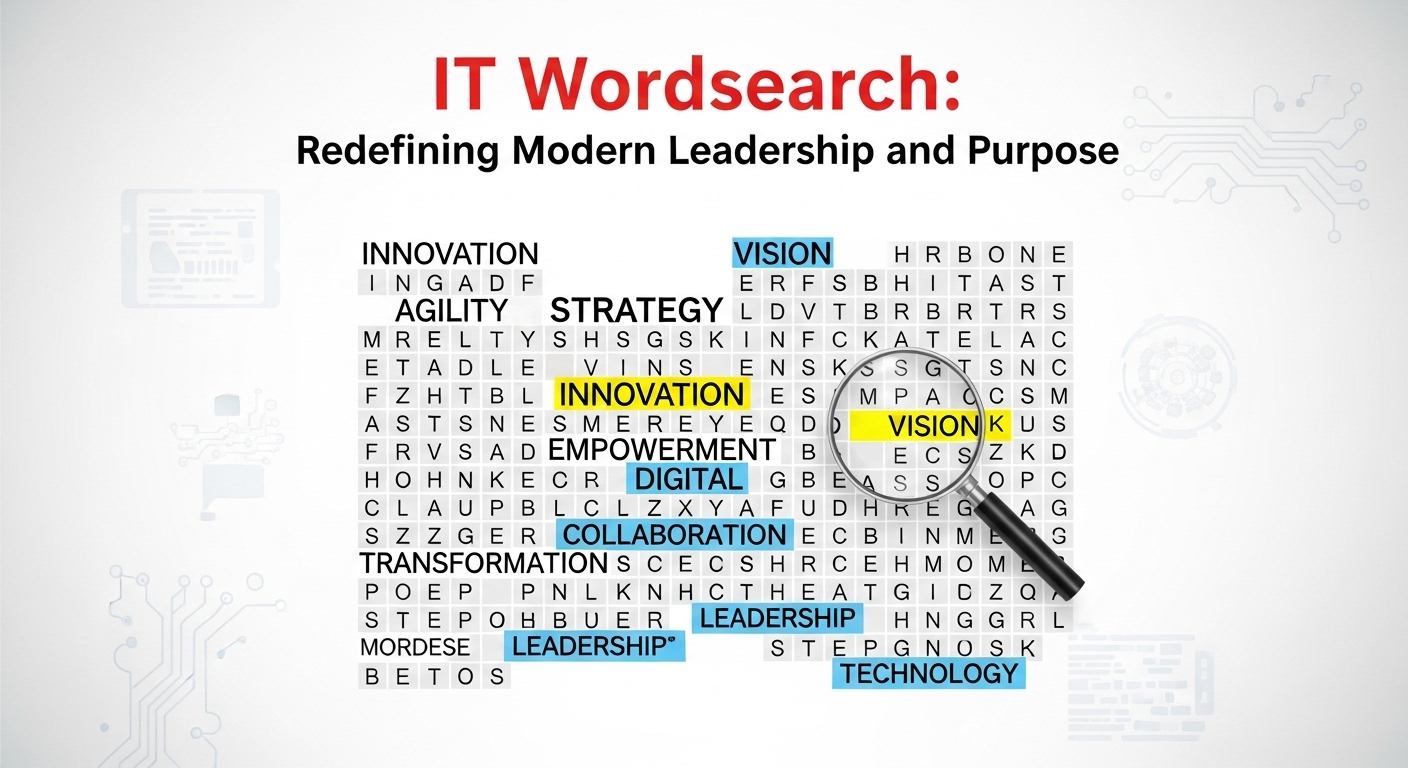BUSINESS
Understanding Preventive Measures for Truck Accidents

How can truck accidents be prevented?
Understanding key safety measures can help reduce risks on the road. Proper vehicle maintenance, responsible driving, and following traffic laws play a big role in accident prevention. Both truck drivers and other motorists must stay alert and cautious. Small actions can make a big difference in keeping roads safe.
Keep reading to learn important preventive measures that can help avoid truck accidents!
Inspect Brakes Regularly
Brakes are one of the most important safety features on a truck. Regular brake inspections help prevent accidents caused by brake failure. Worn brake pads can reduce stopping power and increase the risk of collisions. Checking for leaks in the brake system is crucial for maintaining proper pressure.
Drivers should listen for unusual noises like squealing or grinding. These sounds often indicate brake issues that need immediate attention. Brake fluid levels should be monitored to ensure they are within the recommended range.
Mechanics should also inspect brake lines for cracks or damage. Regular maintenance can identify minor issues before they become major problems. Trucking companies should follow manufacturer guidelines for inspection schedules. Consistent brake checks are essential for keeping trucks safe on the road.
Check Tire Conditions
Tires are essential for maintaining truck stability and control. Worn tires can reduce traction, especially on wet or icy roads. Drivers should inspect tires before and after each trip. Proper tire pressure is crucial for safe handling. Underinflated tires can cause overheating and blowouts.
Overinflated tires may lead to poor road contact and reduced control. Tread depth should always meet recommended safety standards. Shallow tread can make it harder to stop or turn safely. Drivers should also check for cracks, punctures, or bulges. Damaged tires can fail unexpectedly, increasing accident risks.
Wheel alignment should be checked regularly to prevent uneven tire wear. Rotating tires helps ensure they wear evenly and last longer. Ensuring lug nuts are properly tightened is also important for safety. Routine tire maintenance helps reduce accidents and improves overall road safety.
Maintain Proper Lighting
Proper lighting is crucial for truck safety. Headlights help drivers see the road clearly at night. Dim or misaligned headlights can reduce visibility. Taillights and brake lights alert other drivers when a truck is slowing down. Faulty brake lights can increase the risk of rear-end collisions.
Turn signals must always function to indicate lane changes or turns. Reflectors improve visibility, especially in low-light conditions. Regularly cleaning lights ensures they remain bright and clear. Burnt-out bulbs should be replaced immediately.
Checking for loose or damaged wiring is also important. Drivers should inspect lights before every trip. Emergency flashers must be operational for roadside stops. Backup lights are essential for safe reversing. Well-maintained lighting systems help prevent accidents and improve road safety.
Ensure Secure Cargo Loading
Proper cargo loading is vital for truck stability. Unsecured cargo can shift during transit and cause accidents. Drivers should always inspect loads before starting a trip. Using straps, chains, or load bars helps keep items secure. Heavy items should be placed low and evenly distributed.
Uneven weight can affect balance and steering. Overloading a truck can strain brakes and tires. Drivers should check that all tie-downs are tight and in good condition. Loose cargo can fall onto the road and endanger other vehicles.
Tarps and covers should be used to protect lightweight materials from blowing away. Regular stops to inspect the load during long trips are important. Drivers must follow weight limits set by local laws. Ignoring these rules can lead to fines and safety risks. Safe cargo loading helps prevent rollovers and collisions.
Follow Speed Limits
Driving at safe speeds is essential for preventing accidents. Speed limits are designed to match road conditions and vehicle types. Trucks need more time and distance to stop than smaller vehicles. Exceeding speed limits increases the risk of losing control.
Speeding is a common factor in crashes, such as Illinois truck accidents causes. Following posted limits helps drivers react better to sudden stops or obstacles. Speed control is especially important on curves and steep roads. Wet or icy conditions make speeding even more dangerous. Drivers should reduce speed in construction zones to avoid hazards.
Slower speeds improve stability when carrying heavy or tall loads. Using cruise control can help maintain safe speeds on highways. Monitoring speed with dashboard displays ensures drivers stay within limits. Trucking companies should remind drivers about safe speed practices. Obeying speed limits reduces accident risks and improves road safety.
Enforce Rest Breaks
Fatigue is a major cause of truck accidents. Tired drivers have slower reaction times and poor judgment. Regular rest breaks help drivers stay alert and focused. Trucking companies should enforce scheduled breaks to reduce fatigue. Breaks give drivers time to stretch, eat, and recharge.
Well-rested drivers are more aware of road conditions. Skipping breaks can lead to drowsy driving and accidents. Resting in safe and quiet areas improves sleep quality. Drivers should plan routes with rest stops in mind. Following federal Hours of Service (HOS) rules is crucial.
These regulations set limits on driving hours to prevent exhaustion. Short naps during breaks can boost energy levels. Staying hydrated and eating balanced meals also helps maintain focus. Consistent rest breaks improve safety for both truckers and other road users.
Use Anti-Collision Systems
Anti-collision systems are valuable for improving truck safety. These systems use sensors to detect potential hazards. They can warn drivers about vehicles, pedestrians, or obstacles ahead. Some systems automatically apply the brakes to prevent collisions. Forward collision warning systems help drivers react faster.
Lane departure warnings alert drivers when they drift out of their lane. Blind-spot monitoring reduces the risk of sideswipe accidents. Adaptive cruise control adjusts speed to maintain a safe following distance. Rearview cameras improve visibility when reversing.
Anti-collision technology is especially helpful in heavy traffic. Regular maintenance ensures these systems function properly. Drivers should still remain attentive despite using such systems. Combining technology with safe driving practices improves overall safety. Investing in anti-collision systems can significantly reduce truck accident risks.
Conduct Routine Safety Training
Routine safety training is essential for reducing truck accidents. Drivers should receive regular instruction on defensive driving techniques to improve their awareness on the road. Training programs should focus on proper vehicle inspection procedures to ensure trucks are safe before every trip.
Educating drivers about cargo loading practices helps prevent shifting loads that can cause rollovers. It is also important to teach drivers how to respond to emergencies, such as brake failures or tire blowouts. Understanding how to drive in severe weather conditions can prevent skidding and loss of control.
Drivers must also be trained to recognize signs of fatigue and know when to take breaks. Learning how to use advanced safety technologies, like anti-collision systems, enhances overall protection. Regular refresher courses keep experienced drivers aware of updated safety standards and best practices.
Install Dash Cameras
Dash cameras are valuable tools for improving truck safety. They record real-time footage of the road and driver behavior. This footage can provide evidence in case of accidents, helping to determine fault. Monitoring driver actions encourages safer driving habits. Drivers are more likely to follow safety rules when they know they are being recorded.
Dash cameras can also capture dangerous behaviors from other drivers. Reviewing footage helps trucking companies identify risky driving patterns. This allows managers to provide targeted training to improve safety. Dash cameras are useful for monitoring blind spots and traffic conditions.
They can also capture sudden events, such as brake failures or tire blowouts. In some cases, recorded footage can help drivers avoid false accident claims. Regularly reviewing dash cam data helps ensure drivers follow company policies. Proper camera maintenance is important to ensure clear video quality.
Monitor Blind Spots
Blind spots are a major concern for truck drivers. Large trucks have larger blind spots than smaller vehicles. Drivers should always check mirrors before changing lanes. Using wide-angle mirrors can improve visibility. Blind-spot detection systems provide alerts when vehicles are nearby.
These systems help drivers avoid sudden lane changes. Turning too quickly without checking blind spots can cause collisions. Drivers should also be aware of blind spots when merging onto highways. Frequent mirror adjustments can improve overall visibility.
Proper positioning of side mirrors reduces hidden areas. Drivers must signal early before switching lanes. Training programs should teach drivers how to manage blind spots. Checking blind spots before reversing is also crucial. Consistently monitoring these areas helps prevent serious accidents.
Improve Driver Health Programs
Healthy drivers are safer drivers on the road. Trucking companies should promote programs that support driver well-being. Encouraging regular exercise helps improve strength and focus. Providing healthy meal options can reduce fatigue and improve energy levels.
Drivers should be educated about the risks of poor sleep habits. Proper rest improves alertness and reaction times. Stress management programs can help drivers stay calm in high-pressure situations. Routine health checkups can detect issues before they become serious.
Vision and hearing tests ensure drivers can respond to road hazards. Support for mental health is also important for overall well-being. Access to fitness facilities during rest breaks can encourage physical activity. Hydration reminders can prevent headaches and drowsiness.
Learn More About Preventive Measures for Truck Accidents
Preventive measures are key to avoiding accidents and problems. Taking simple steps can improve safety and efficiency. Regular maintenance and careful planning help prevent costly issues.
Staying informed allows you to make better decisions. Small efforts can make a big difference in the long run. Prioritizing prevention keeps you, your home, and others safe.
Looking for more tips and ideas? We’ve got you covered. Check out some of our other posts now.
BUSINESS
The Power of Peace of Mind: Why Insurance Is an Investment, Not an Expense

Understanding Insurance as an Investment
Understanding insurance as an investment means recognizing that certain policies serve a dual purpose: offering financial protection and building long-term value. Unlike savings accounts, these policies create a safety net and accumulate cash value, like life insurance growing through interest or dividends, providing coverage and wealth buildup. Viewing insurance this way helps individuals choose policies aligned with their financial goals and risk tolerance. Even standard policies, such as auto insurance, contribute to financial planning by covering damages and liabilities, preventing major expenses that could affect budgets or investments. Recognizing insurance’s dual role as protection and potential investment allows for better financial stability and peace of mind.
Major Types of Insurance and Their Benefits
Each insurance type serves a specific purpose. Health insurance covers unexpected illnesses, providing lifesaving care when needed. Property and homeowner’s insurance help rebuild after fires or storms. Auto coverage protects your vehicle and passengers and fulfills legal requirements, shielding parties from losses. Policies can be customized with add-ons like identity theft or bundling car, house, or business liabilities to suit your needs. Home insurance is essential for homeowners, protecting against weather damage, theft, and liability, so you can rest easy. The right coverage considers your assets, lifestyle, and goals, building a safety net. When choosing insurance, look beyond premiums to the long-term impact of coverage.
The Economic Impact of Insurance on Communities
Insurance isn’t just about individual peace of mind; it fortifies entire communities. When people and businesses insure their property, health, and liabilities, they’re more likely to innovate, expand, and support local economies without the threat of catastrophic loss holding them back. In times of crisis, insurance payouts for rebuilding and recovery help stabilize neighborhoods and reduce the strain on public resources.
Economists have observed for a long time that insurance significantly supports entrepreneurship and investment in new ventures. Industries with good coverage tend to withstand economic downturns better and recover more quickly from unexpected shocks. Without the reassurance provided by insurance, growth and innovation would slow down considerably, and the potential risks might prevent significant advancements.
Integrating Insurance into Long-Term Financial Planning
Insurance should be a pillar of any sound financial plan. Start by assessing which risks could cause serious setbacks and match coverage types to those needs. For example, young families often prioritize life insurance for security, while property owners focus on home protection. Consistently reviewing policies ensures your protection evolves along with life changes, from family milestones to new business ventures.
Smart policyholders treat premiums as contributions toward future security—much like retirement savings or investments in education. This proactive mindset isn’t about compliance or mere obligation; it’s about wisely positioning yourself and your loved ones to weather whatever comes, while supporting the stability and prosperity of your broader community.
Conclusion
In today’s unpredictable world, the value of insurance extends far beyond a monthly bill. It is a critical investment, weaving together individual peace of mind with the collective strength of families, homeowners, and business owners. By embracing insurance as a strategic tool rather than an expense, you empower yourself to pursue your dreams and build a future fortified against life’s uncertainties.
Building your protection strategy now lays the groundwork for confidence, stability, and security—qualities that enrich not only your own life but also the broader community and economy. Make insurance a purposeful component of your financial plan and experience the freedom that comes from true peace of mind.
BUSINESS
IT Wordsearch: Redefining Modern Leadership and Purpose

In today’s rapidly evolving world, leadership is no longer defined solely by financial success or corporate expansion. The most influential leaders are those who integrate business excellence with social responsibility, building organizations that thrive while uplifting communities. One such emerging perspective in this landscape is IT wordsearch—a concept that symbolizes the search for meaning, alignment, and innovation in modern leadership.
This article explores how IT wordsearch represents more than a puzzle-like curiosity. It reflects a deeper leadership journey—one where purpose and performance align, where success is measured not only in profits but also in people, culture, and long-term impact.
What is IT Wordsearch?
At first glance, it wordsearch may sound like a simple activity: finding hidden words within a grid. Yet when applied to leadership and business, the phrase takes on a symbolic meaning. It suggests a process of discovery, alignment, and focus. Just as players search for hidden words, leaders must search for solutions, values, and strategies hidden within the complexity of today’s global challenges.
The idea resonates with professionals who believe that economic growth and positive social change are not mutually exclusive but deeply interconnected. Much like solving a wordsearch, success lies in recognizing patterns, connecting dots, and uncovering possibilities others may overlook.
A Leadership Philosophy Rooted in Discovery
At the heart of the it wordsearch philosophy is the belief that leadership is a continuous search for purpose. This approach emphasizes three core values:
- Empathy in leadership: Understanding the human side of business, from employees to customers.
- Sustainability: Ensuring long-term growth by balancing profitability with environmental and social responsibility.
- Collaboration: Building partnerships that amplify both business outcomes and community well-being.
This framework reflects a growing awareness that modern organizations do not exist in isolation. They are part of larger ecosystems where every decision has ripple effects. Leaders who embrace the it wordsearch mindset don’t just chase immediate wins—they uncover deeper value that sustains both business and society.
Bridging Business Growth with Social Impact
What makes the it wordsearch approach so powerful is its ability to link corporate success with community impact. Much like finding words hidden within a grid, leaders must look beyond the obvious to discover opportunities for shared growth.
Examples of this approach include:
- Workplace Culture: Designing inclusive, supportive environments that attract and retain diverse talent.
- Community Investment: Reinvesting resources into education, local initiatives, and social programs before they become urgent needs.
- Innovation for Good: Using technology to solve pressing challenges, from environmental sustainability to equitable access to services.
When these values are embedded into strategy, businesses create a virtuous cycle: strong companies nurture stronger communities, which in turn sustain future growth.
Influence in the Digital Age
The digital landscape has amplified the importance of acting with foresight. Just as a wordsearch reveals hidden connections, the digital world reveals opportunities for influence and innovation. Leaders today use platforms not only for visibility but also to inspire movements and conversations around responsible practices.
With it wordsearch as a guiding principle, leaders leverage digital tools to:
- Reach broad audiences with authentic messages.
- Engage younger generations who value transparency and inclusion.
- Inspire peers to adopt purpose-driven strategies.
In this sense, digital influence is no longer about self-promotion—it is about amplifying messages that shape industries and communities alike.
A Model for the Next Generation
The rise of it wordsearch as a metaphor for leadership aligns closely with the values of Millennials and Gen Z. Younger professionals increasingly seek role models who:
- Live authentically, aligning values with action.
- Promote diversity and equity, not as an afterthought but as a foundation.
- Think globally, addressing interconnected challenges such as climate change, inequality, and digital ethics.
These expectations highlight why it wordsearch resonates—it symbolizes the search for alignment in an often disjointed world. By embodying these principles, leaders position themselves not just as executives but as mentors and trailblazers.
Challenges in the Search
Like solving a difficult puzzle, applying the it wordsearch philosophy is not without challenges. Leaders face:
- Balancing short-term pressures with long-term commitments to purpose.
- Convincing traditional stakeholders of the measurable value of social responsibility.
- Navigating uncertainty in rapidly changing markets and technologies.
However, these challenges are also opportunities. Much like hidden words, solutions often lie just beneath the surface. Leaders who embrace curiosity and adaptability can turn obstacles into breakthroughs.
Why the Wordsearch Metaphor Matters
The metaphor of it wordsearch matters because it reflects the complexity of modern leadership. Success isn’t about finding a single answer; it’s about uncovering many interconnected solutions. A leader who can anticipate challenges, spot hidden opportunities, and align strategy with purpose is far better equipped to guide organizations through uncertainty.
This proactive mindset is essential in a world where reactive leadership often falls short. Waiting until challenges dominate headlines is too late. By searching for solutions early—before they are visible to all—leaders create lasting resilience.
Looking Ahead
As leadership continues to evolve, it wordsearch represents more than a clever metaphor. It is a call to action: to search for meaning, embrace complexity, and discover opportunities before they become urgent.
In a world where consumers, employees, and investors increasingly demand accountability, the leaders who succeed will be those who treat every challenge like a wordsearch puzzle—hidden with possibilities waiting to be uncovered.
The future belongs to leaders who see beyond profits, who connect performance with purpose, and who embrace the ongoing search for what truly matters. In the end, the most powerful leaders are those who uncover meaning not after the fact, but during the process—just as one finds words hidden in a puzzle grid.
BUSINESS
Before It’s News: Redefining Leadership in a Changing World

In today’s interconnected world, leadership is no longer defined purely by profit margins, market dominance, or financial growth. Increasingly, the leaders who stand out are those who create meaningful change—bridging the gap between business performance and social responsibility. In fact, conversations happening before it’s news often shape how organizations and individuals think about the future.
This article explores how the concept of “before it’s news” reflects a deeper cultural and business shift—anticipating trends, shaping narratives, and redefining success. By examining the journeys of emerging leaders, their philosophies, and the growing demand for purpose-driven strategies, we can understand why the future of leadership depends on action taken before headlines break.
What Does “Before It’s News” Mean in Leadership?
At its core, “before it’s news” suggests being proactive rather than reactive. It is about anticipating changes, leading with foresight, and addressing challenges before they become crises. In leadership, this mindset is vital. The leaders who succeed are those who don’t wait for external pressures to dictate their strategies; they innovate early, prioritize people, and create impact that resonates long before traditional media picks it up.
This principle goes beyond marketing or branding. It’s about cultivating values and practices that matter today—so they are recognized tomorrow. Leaders who embody this philosophy are changing industries, communities, and even global perspectives.
Leadership Rooted in Purpose
A strong “before it’s news” leader understands that success cannot be measured solely by numbers. Instead, purpose-driven business practices define sustainable growth. These practices focus on three core pillars:
- Empathy: Understanding the human side of organizations, from employees and customers to communities at large.
- Sustainability: Balancing financial outcomes with environmental stewardship and long-term responsibility.
- Collaboration: Building meaningful partnerships that amplify both business and community goals.
This shift reflects a growing recognition that businesses are embedded in wider ecosystems. When organizations thrive at the expense of their communities, the gains are short-lived. But when they integrate purpose, growth becomes both durable and inclusive.
The Power of Anticipating Change
Why is anticipation so crucial? Because the business and social landscape evolves faster than ever. Digital transformation, environmental concerns, and shifting workforce expectations demand leadership that adapts instantly. Waiting until something becomes a headline is often too late.
Those who act before it’s news are the ones who:
- Launch sustainable practices before regulations force change.
- Foster inclusive cultures before social movements highlight inequities.
- Develop innovations that solve problems before they escalate.
This mindset creates resilience and positions leaders as trailblazers rather than followers.
Bridging Business Growth with Social Impact
What makes this approach especially powerful is its ability to merge traditional business success with broader impact. Leaders who anticipate trends and act early can align profitability with social value. For example:
- Workplace Culture: Proactively shaping inclusive environments that attract diverse talent before it becomes a hiring crisis.
- Community Investment: Supporting local education, health, and initiatives before communities demand it.
- Innovation for Good: Using technology and research to solve social challenges before they grow critical.
When leaders focus on these areas, they establish a virtuous cycle. Businesses grow because they are trusted; communities thrive because they are supported; and together they build resilience for the future.
Influence in the Digital Era
The phrase “before it’s news” also captures how digital platforms have changed leadership. Information moves instantly. Narratives spread across social media, blogs, and grassroots platforms faster than traditional outlets can keep up. For leaders, this means two things:
- Visibility is critical—voices are amplified in real time, and silence can be just as noticeable as action.
- Authenticity matters—audiences, especially younger generations, value transparency and consistency.
Forward-thinking leaders use digital tools not only for branding but also to amplify conversations around responsibility, inclusion, and innovation. This presence builds trust and ensures their messages reach wider audiences before others shape the narrative.
A Model for the Next Generation
Younger generations—Millennials and Gen Z—are especially drawn to leaders who embody the spirit of “before it’s news.” These professionals want mentors and role models who:
- Live authentically, ensuring values align with actions.
- Promote diversity and inclusion, not as an afterthought, but as a core principle.
- Think globally, acknowledging interconnected challenges like climate change, inequality, and technological disruption.
By championing these qualities, leaders set new standards for what success means. They show that power is not in waiting for change but in creating it.
Challenges Along the Way
Of course, leading with foresight is not without obstacles. Leaders committed to acting before something becomes news often face:
- Short-term pressure from stakeholders focused solely on quarterly results.
- Skepticism from traditional thinkers who struggle to see the ROI of social responsibility.
- Uncertainty from markets and technologies that shift constantly.
But within these challenges lie opportunities. Anticipating barriers allows leaders to innovate solutions earlier, positioning themselves as adaptable and resilient.
Why Acting Before It’s News Matters
The difference between reactive leadership and proactive leadership can define the fate of organizations. Those who wait until issues reach headlines risk falling behind. Those who anticipate change not only avoid crises but also build credibility, trust, and long-term strength.
This is especially true in a world where consumers, employees, and investors demand accountability. The expectation is no longer optional—it’s central. Leaders who act before it’s news are setting the gold standard.
Looking Ahead
As leadership continues to evolve, the “before it’s news” mindset will only grow in importance. The ability to combine foresight, empathy, and strategy creates leaders who do more than respond—they shape the future.
In an era where headlines change daily, real leadership is defined not by reacting to what’s trending, but by acting on what truly matters before it ever reaches the spotlight.
The next generation of successful leaders will be those who understand this simple truth: the most powerful decisions are made before it’s news.
-

 HEALTH1 year ago
HEALTH1 year agoIntegrating Semaglutide into Your Weight Loss Plan: A Practical Guide
-

 HOME IMPROVEMENT1 year ago
HOME IMPROVEMENT1 year agoHow to Choose the Perfect Neutral Area Rug for Every Room
-

 LAW1 year ago
LAW1 year agoTeenage Drivers and Car Accidents in California: Risks and Parental Liability
-

 LAW1 year ago
LAW1 year agoPost-Divorce Considerations in California: Modifications and Long-Term Planning
-

 CONSTRUCTION1 year ago
CONSTRUCTION1 year agoConstruction Site Safety Regulations in New York and Your Rights as a Worker
-

 HOME1 year ago
HOME1 year agoSandra Orlow: The Teen Model Who Captivated the Internet
-

 FINANCE1 year ago
FINANCE1 year agoDigital Asset Management in Florida Estate Planning
-

 LAW1 year ago
LAW1 year agoKentucky’s School Football: Concussions, Injuries, and Legal Options


